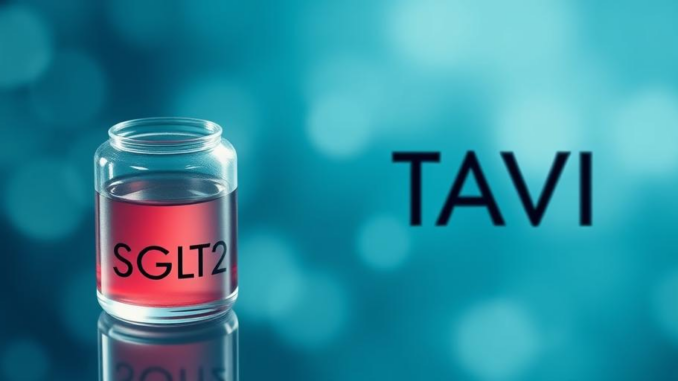
Summary
SGLT2 inhibitors, like dapagliflozin, significantly improve outcomes for high-risk older adults undergoing transcatheter aortic valve implantation (TAVI). A recent study showed a marked reduction in mortality and heart failure events in patients receiving dapagliflozin. This research paves the way for SGLT2 inhibitors to become a new standard of care following TAVI, improving the lives of many elderly patients.
Secure patient data with ease. See how TrueNAS offers self-healing data protection.
** Main Story**
So, there’s been some buzz recently about SGLT2 inhibitors, specifically dapagliflozin, after TAVI (transcatheter aortic valve implantation). A new clinical trial called DapaTAVI is showing some really promising results, suggesting that these inhibitors might actually become a new standard of care post-TAVI.
Basically, what the study found was a nearly 30% reduction in the combined risk of death and heart failure events in older patients who received dapagliflozin, compared to those just getting the usual standard care. It’s a pretty big deal, especially considering the challenges we face in geriatric cardiology.
The Need for Better Care After TAVI
The DapaTAVI trial really zeroed in on a specific group: TAVI patients with a history of heart failure and other risk factors, like diabetes, kidney issues, or a weakened left ventricle. I mean, these folks are already at a higher risk of complications after the procedure, even though TAVI addresses the aortic stenosis itself. It’s like fixing a leaky faucet but ignoring the underlying plumbing problems, if you catch my drift. It helps, of course, but does it address all the issues? Not entirely.
And that’s precisely where SGLT2 inhibitors come into play. They offer that extra layer of protection against heart failure and, hopefully, lead to improved survival rates. You know, it reminds me of a mentor who always said, “Treat the patient, not just the symptom.” Seems fitting here.
Diving into the DapaTAVI Trial
Okay, so the DapaTAVI trial itself? It was conducted in Spain, involving over 1200 patients across 39 centers. A pretty sizable study. They randomly assigned participants to either receive dapagliflozin or just the standard care after their TAVI.
The main thing they were tracking was a composite of all-cause mortality and worsening heart failure. Guess what? After a year, the dapagliflozin group showed a significantly lower rate of these events, around 15%, compared to the 20.1% in the standard care group. That’s a 28% relative risk reduction. Pretty impressive, right? And, interestingly, these benefits held steady across different subgroups, regardless of whether they had diabetes or not.
How This Impacts Geriatric Care
Honestly, the DapaTAVI trial could really shake things up in geriatric care. With aortic stenosis becoming more common, and TAVI being used more often in older adults, adding SGLT2 inhibitors to the mix could prevent a ton of heart failure events. Plus, it’s a win for their overall quality of life.
And here’s something important to consider: the study demonstrates the safety and effectiveness of SGLT2 inhibitors in a largely elderly population – a group that often gets overlooked in clinical trials. It’s fantastic to have this kind of data when making treatment decisions for our older patients. What’s next? Well, future research will likely look at using SGLT2 inhibitors in broader TAVI populations, and figure out the best timing and how long to use them for. Think of it like opening a door to explore other interventions that can improve outcomes after TAVI, making life better for older adults with heart disease.
A Change in How We Think About Treatment
It used to be that everyone thought TAVI alone was enough to handle the heart failure risk in these patients, because, after all, you’ve sorted out the mechanical issue. Because of that thinking, SGLT2 inhibitors were often under-prescribed.
However, the DapaTAVI trial really challenges that old way of thinking. Turns out, the underlying heart disease is still there, even after the valve replacement is done. Therefore, we might need a more holistic approach, including SGLT2 inhibitors in the post-TAVI plan, to really optimize things for patients. All in all, this trial feels like a big step forward, paving the way for better care for older adults undergoing TAVI.


This is a compelling study; the nearly 30% risk reduction is significant. It would be interesting to investigate the potential for personalized SGLT2 inhibitor dosage based on individual patient risk profiles post-TAVI to further refine treatment strategies.
Thanks for your comment! I agree that personalized dosage is an exciting area for future research. Tailoring SGLT2 inhibitor dosages to individual risk profiles after TAVI could optimize treatment effectiveness and minimize potential side effects. Further studies in this area would be invaluable!
Editor: MedTechNews.Uk
Thank you to our Sponsor Esdebe